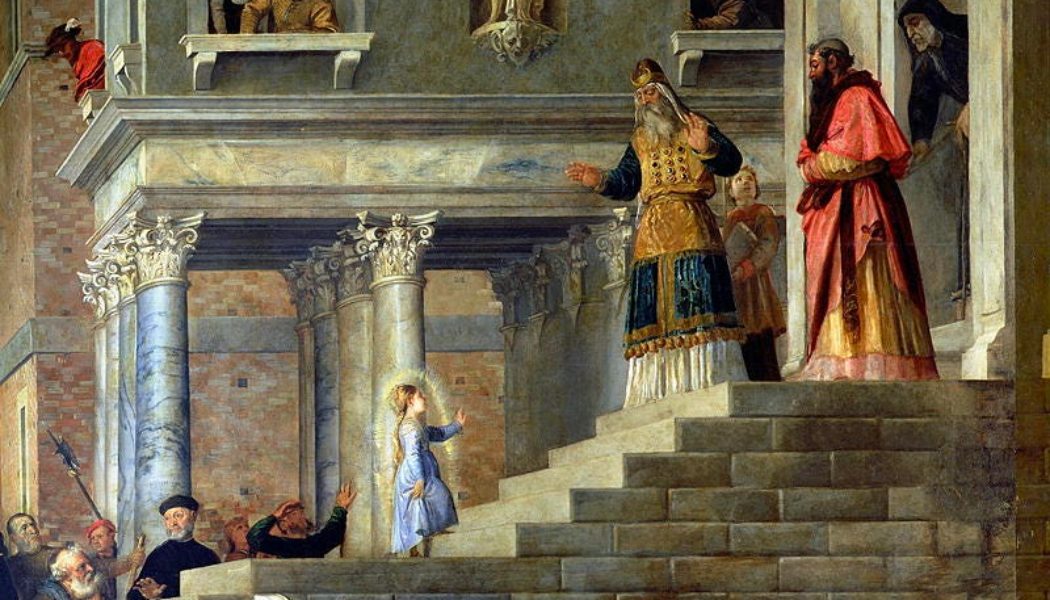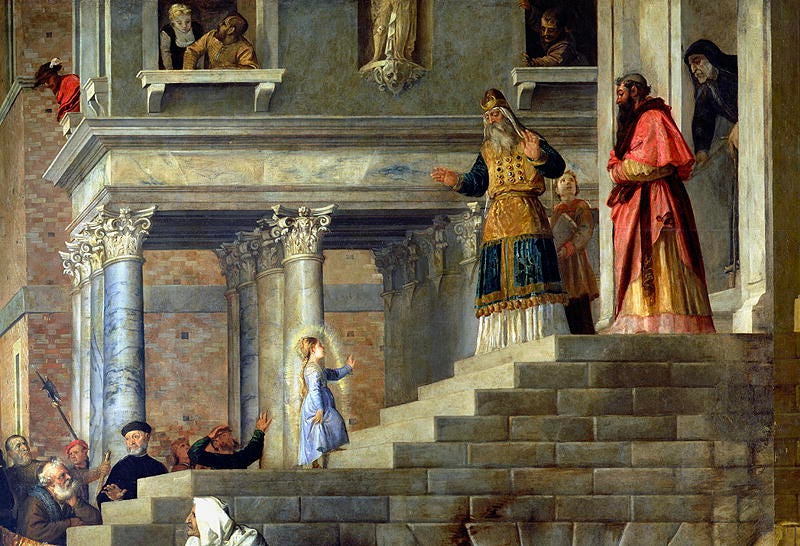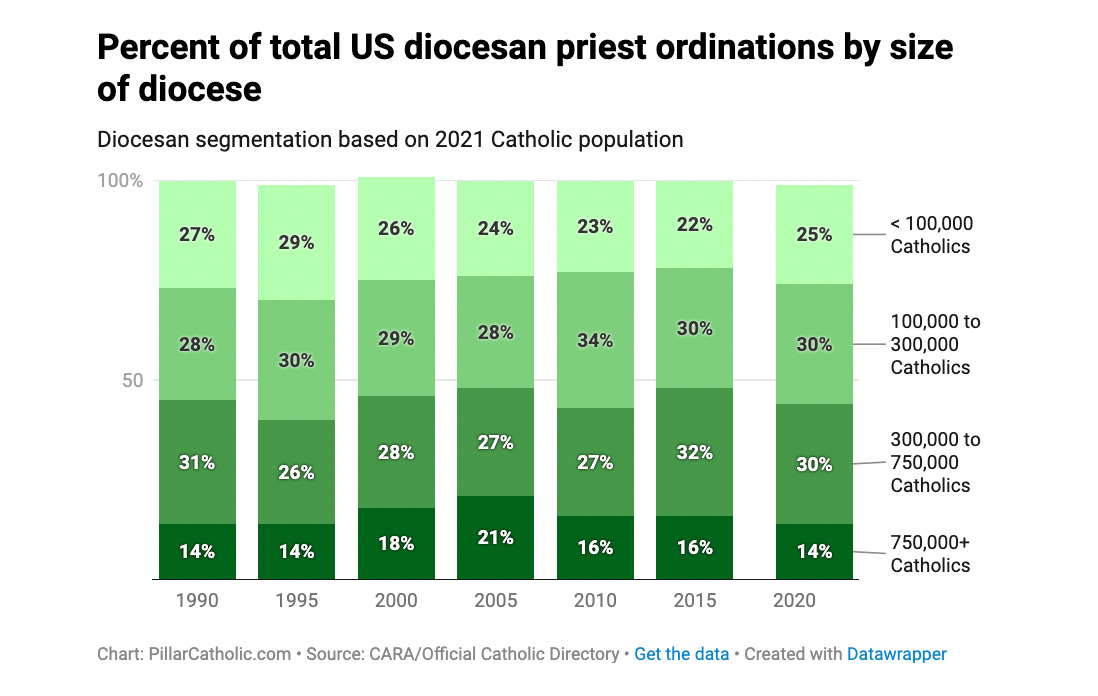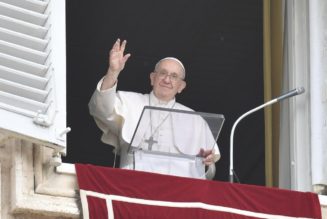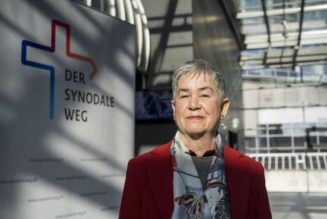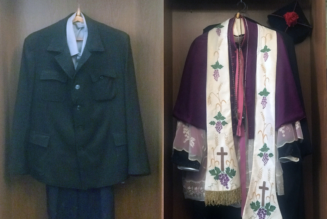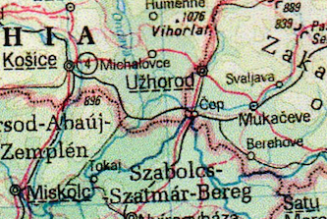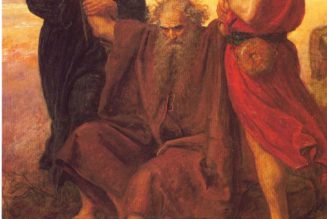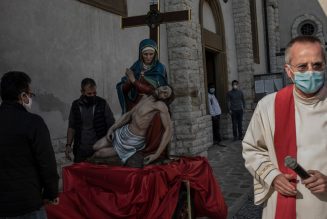Hey everybody,
Happy Thanksgiving. And more to the point, at least for today, blessed feast of the Presentation of the Blessed Virgin Mary.
The feast of the Presentation of Mary commemorates an ancient Christian tradition, which holds that when she was just a few years old, Mary’s parents, Joachim and Anne, decided to consecrate their daughter to God, and brought her to the Temple in Jerusalem. Some pious customs say that Mary — as a toddler, practically — was even able to enter the Holy of Holies, the innermost sanctum of the Temple.
Of course, Mary would later become a kind of living Holy of Holies, a kind of temple for the divine child she carried.
Anyway, there at the Temple, according to most ancient Christian traditions, Mary remained until she was 12 years old, as a kind of student and Temple servant, a youthful novice in the ways of worship.
That sort of practice sounds super unusual to us. No doubt, few families would leave their toddler children to live at the diocesan cathedral today, to be formed for Christian holiness. And obviously, safe environment policies would make such a prospect unlikely.
But in the time of the Blessed Virgin Mary’s childhood, this was not so unusual, and there were small Temple schools, if you will, for boys and girls entrusted to this kind of consecrated childhood by their parents.
If you listen to Sunday School, The Pillar’s Bible study podcast, you know that some Scripture scholars believe that Mary perceived a call from a young age to perpetual virginity — that it wasn’t sort of a late-in-the-game decision for her, but a deep-seated and long-held understanding that God was calling her to a kind of consecrated virginity. That seems to align with this early Christian custom of celebrating liturgically the early presentation in the Temple of the Blessed Virgin.
The feast, by the way, really is long-standing. It was celebrated at least as early as the sixth century, and has been celebrated continuously in the Eastern Churches since. In the West, the feast has had a less consistent history — pockets of customary celebration, periods on and off the liturgical calendar — but since the 1580s, the whole of the Church, West and East, has celebrated the Presentation of the Blessed Virgin Mary.
I’ll tell you what: When I prayed with this feast this morning, I thought a lot about Mary and Joseph themselves finding Jesus in the Temple — about the rosary’s fifth joyful mystery.
I’ve written before, almost two years ago now, about that mystery from the perspective of a parent — about the existential terror that most of us would have felt while searching for a lost child over the course of three days. I think those lost days prefigure the terror of the Lord’s death, in the days preceding his resurrection.
But this morning I thought about something else: How very intimate it would have been for the Blessed Virgin Mary to find her son eager to be in the same place in which she spent her own childhood. How much a consolation that would be.
The Lord didn’t have a Temple childhood. He spent his early years first in Egypt, and then in the Galilean village of Nazareth. But one wonders, as Mary pondered the meaning of her son’s existence, if she thought about her own childhood formation in the Temple — if she tried to replicate it in the way she made her home.
I wonder too, if seeing her son there in the Temple, in his “Father’s house,” was a kind of confirmation for Mary of the Providential path of her own life — of the way she’d been prepared to be the Mother of the Lord.
Look, any parent who is a disciple of Jesus knows that the most fervent prayers are for the faith of children. If you’re anything like me, you beg the Lord daily to help your children to find life in Him, to know Him, to follow Him.
If you’re anything like me, your biggest regrets are the moments when you became a countersign of the Gospel for your own children.
And your biggest hopes are that God will speak to those children in spite of you — that even when you’re a stumbling block for them, they’ll find the answer to that scandal at Calvary.
Everything is different for her, of course. We can hardly compare our own experiences to hers. But I find myself thinking that the Blessed Virgin Mary must have had a flood of gratitude when she found the Lord of the Temple, there at the Temple of her own youth.
May she intercede for us all.
The news
There are, at present, some 37 saints formally declared “doctors of the Church” — recognized, essentially, as having made a vital contribution to the theological and mystical tradition of the Church, and as being, therefore, “universal teachers.”
If you know much about Bishop Flores, you probably know he had a lot to say:
“It would certainly spur us to come out of our categories because he’s not easily categorized: Liberal, conservative, reactionary, traditionalist, and so on,” Bishop Flores said.
“Newman doesn’t fit those labels. Newman is Newman. Newman is Newman, which I think is one of the signs of a reliable Doctor of the Church.”
“Newman is Newman, just like St. Thomas is St. Thomas. Many people came after him and interpreted him in certain ways, and they fight amongst themselves, and still do. And Augustine is Augustine. Teresa of Avila is Teresa of Avila. Thérèse of Lisieux is Thérèse of Lisieux.”
“You take them for who they are in the historical context, and they have much to say to us. That’s how I would look at it.”
It was a wide-ranging conversation, and well worth your time.
Brendan found that the smallest American dioceses — with just 5% of the total U.S. Catholic population between them — account for 25% of annual ordinations to the priesthood.
The reason seems to be that in a smaller diocese, it’s more likely a young man will be asked to enter the seminary — and being asked is basically among the best statistical predictors that someone will actually become a priest.
It’s worth knowing that smaller dioceses are doing much better at priestly vocations numbers, and here’s why — across the country, America’s smaller, rural dioceses are becoming less populated, and the biggest dioceses are becoming bigger. There’s talk of diocesan mergers in the air — for example, I’ve been told it’s likely a vote on the possible merger of the Diocese of Steubenville will be back on the table fairly soon.
But bigger dioceses, while they may be easier to manage in some ways, are ordaining priests well below the sustainability level. Smaller, rural dioceses are much closer to ordinations at replacement rate, and a share of them even exceed that number.
If you’re a vocations director, or a diocesan bishop, or you just care about how you’ll get sacraments in the future — you really need to look at this data.
Especially because if there’s one takeaway, it’s this: It’s not enough for Father Pastor or Father Vocations Director to encourage people toward seminary. The numbers are pretty clear: that’s something every Catholic should be doing.
The letter was made public Tuesday.
In its text, the pope criticized the plan for something in Germany called a “synodal council,” which would be a “decision-making body” of laity and bishops, set to launch in 2026.
The council’s “proposed structure is not in alignment with the sacramental structure of the Catholic Church,” the pope said, and its formation “was forbidden by the Holy See,” earlier this year.
Despite that prohibition, plans for the synodal council continue in Germany.
You can read about the pope’s letter here.
But many German Catholics are already wondering whether the pope will limit himself to letters expressing disapproval, or if he’ll soon feel compelled towards a more authoritative response for the set of German Church leaders taking Vatican prohibitions “under advisement” while proceeding with their own plans.
Cardinal Sako got a decree back in 2013 from the country’s government which recognized him as head of the Chaldean Catholic Church — a kind of writ of legitimacy, which the leaders of very few religious minorities were able to obtain. But in October 2022 it was rescinded — under the influence of an Iranian-backed militia which has become a powerful force in Iraq.
The cardinal claims that the leader of that militia wants to seize control of the Church’s assets in Iraq.
Amid all of that, Sako fled Baghdad this summer, stating that the circumstances might require him to “give up my life for the Church.”
In Iraq, Sako lost a court battle over his decree last week, and — just days later — Iraq’s president had a meeting with Pope Francis, in which the pontiff urged that “the Catholic Church in Iraq to be able to continue to carry out its valued mission,” according to the Vatican.
It doesn’t seem likely the president will budge, and in the meantime, Christians are facing rather acute persecution in Iraq.
What will Sako do now? How much will the pope push? Read the latest here.
—
Meanwhile, on another diplomatic front, The Pillar’s Luke Coppen checked in this week on the pope’s decision to entrust Cardinal Matteo Zuppi with a peacebuilding mission in Ukraine.
It was six months ago, in May, when the pope announced that Zuppi had been given the task of leading a mission, in agreement with the Secretariat of State, to help ease tensions in the conflict in Ukraine.”
But while Zuppi has made a lot of trips in the last six months, diplomatic and Vatican insiders say that the actual mission is now at a “standstill,” with “lots of media visibility” and “lots of public relations,” but few results.
But what would Vatican results in Ukraine actually look like? What could Zuppi call a success? Has anything been accomplished?
Has the Zuppi mission come to nothing?
Luke Coppen does some careful analysis.
‘We’ve been told’
If I may, I’d like to draw your attention to an interview published yesterday by a Connecticut news outlet with Archbishop Christopher Coyne, who is the coadjutor archbishop of Hartford, which means that he’ll become diocesan bishop there when the current archbishop retires — probably on his 75th birthday in April.
Coyne was appointed from the Diocese of Burlington, Vermont, effectively to await his installation in Hartford, and to learn the archdiocese in the meantime.
So in an interview with WTNH news Monday, Coyne was asked about whether he sees a “larger role for women in the Church in the future.”
“I do,” said Coyne. “I do.”
Now, you might have expected that the archbishop would have talked about the importance of women in leadership roles in the Church, or even mentioned the women serving in senior roles in his own archdiocese, including both the archdiocesan school superintendent and communications director.
You might think Coyne could have discussed the senior roles to which women have been appointed in the Vatican in recent years, including the major coordination role at the synod on synodality, and the leadership posts in Vatican dicasteries.
In short, you might have thought that Coyne would discuss the ways in which Pope Francis himself has made major changes in the Vatican on this front, and the ways the U.S. Church depends on women in leadership in nearly every chancery and parish in America — even if he had also discussed the ways in which Church leadership culture can — and should — adapt its policies and culture to better welcome the “feminine genius” in positions of leadership.
But instead, Coyne went to women’s ordination.
“Women’s ordination at this point — in terms of the diaconate — is kind of being discussed,” the archbishop said.
“In terms of, for the priesthood, it’s not open for discussion, we’ve been told, it’s case closed. But hopefully there will be some opportunity down the road … to ordain or name some deaconesses.”
The last remark was a kind of nod to the idea, floated in some circles, of establishing a kind of “instituted deaconess” role for women, in a way meant to be evocative of the early Church. Were that to happen — Pope Francis has now said repeatedly — it wouldn’t involve sacramental ordination, because — Pope Francis has now said repeatedly — holy orders is reserved to men as a matter of divine institution.
While Archbishop Coyne’s mention of “ordaining” women to the diaconate obscured all of that, it’s possible that he fumbled a bit with explaining a complex topic on television. Fair enough.
But what really struck me about the archbishop’s interview was a three word phrase: “… we’ve been told …”
Here’s when he said it: “In terms of, for the priesthood, it’s not open for discussion, we’ve been told, it’s case closed.”
Clearly, Archbishop Coyne had in mind Ordinatio sacerdotalis, in which Pope St. John Paul II, as a solemn act of teaching, “declare[d] that the Church has no authority whatsoever to confer priestly ordination on women and that this judgment is to be definitively held by all the Church’s faithful.”
And Coyne didn’t exactly counter that teaching in the interview. But that “we’ve been told” had an interesting rhetorical effect — it separated the archbishop, rhetorically, from the Church’s doctrine. It made a controversial or difficult teaching something other than him, something apart from him.
The “we’ve been told” was a kind of rhetorical gesture by which he seemed to throw up his hands, as if to say “what can we [plebes] do?”
And the addition of “not up for discussion,” and “case closed” had the effect, rhetorically, of suggesting that Catholic doctrine on sacred orders was imposed in a kind of autocratic manner, by an authority unwilling to listen to what people had to say.
I found all of this fascinating. Because again, without countering Ordinatio sacerdotalis, Archbishop Coyne managed to separate himself from it, to make it “some decision of those out-of-touch guys over there in Rome, who won’t even let us talk about it” instead of an element of the Gospel which he believes and teaches.
Immediately thereafter, having discussed women’s ordination, Coyne took a few minutes to criticize the entrenched Roman bureaucracy of the Vatican. Now, a lot of Catholics, me included, agree that that bureaucracy merits criticism. But in this case, it seemed to me to emphasize the “us and them” approach which began with the archbishop’s remarks on women’s ordination.
I was struck by Coyne’s approach, remembering that canon law emphasizes that bishops be “teachers of doctrine.”
There is a catechetical difference between, “we’ve been told this is not up for discussion and that’s case closed,” and “this is a teaching instituted by Christ, even if we find it difficult.”
Now, listen, if Archbishop Coyne is a Pillar reader, he may disagree with my assessment. He might say that he was a bit new to the camera, and the words didn’t come out as well as he’d hoped. As a person who speaks and writes often in public, and often off-the-cuff, I can relate to that.
Or he might say that his remarks were meant to be a catechesis on Catholic doctrine, that he believes he was teaching the faith zealously and enthusiastically. . And if so — if that’s how he perceives himself — fair enough.
But at The Pillar, we’ve told you for a while to expect a change in the approach, temperament, and style of the bishops appointed metropolitans in the U.S., reflective of the role of Cardinal Blase Cupich and Cardinal Joseph Tobin at the Vatican’s Dicastery for Bishops. It’s possible that change is already underway.
Neanderthal poetics
Ok, so people come over for Thanksgiving, you talk, you drink, you eat, and then … well … most people retreat to the couches for a while to digest, while a few people start tackling the dishes, or the tupperware Tetris of getting leftovers in the fridge.
Then there’s dessert. Then everyone kind of … sits around feeling full for a while, done with the meal, but not eager to face the cold.
Maybe that’s not how it goes for your family, or at the parish hall, or wherever it is that you eat Thanksgiving.
But still, I think it’s something of a cultural cliche that the meal gets prepared for days, eaten in minutes, and then digested on the couch for hours.
I believe there can be a better way. I believe that Thanksgiving is the perfect day for family board games and shenanigans.
But I suspect that if you’re not playing games after the Thanksgiving meal, it might be because you don’t know any good ones.
So I asked my friend Dan D’Agostino, who is a board game nerd, for his recommendations. Dan is, again, a board game purist, so I thought he might chafe at the prospect of providing “party game” recommendations.
But he did make a few suggestions.
To be clear, I’m not making product recommendations to get a commission or something like that. I don’t even know how people get commissions for stuff like that. I just want you to have a good Thanksgiving, and I want to showcase my friend Dan’s knowledge:
“Poetry for Neanderthals”
According to Dan: Poetry for Neanderthals is really stupid, but that makes it fun. Some will be better than others. But you should get it.
“Telestrations”
According to Dan: It’s a simultaneous drawing game, like telephone but with drawing. Everyone draws something, then they pass their drawing boards, everyone guesses what that drawing is, then passes their written guess, then everyone draws what’s written, etc. Highly recommended, and they have a 12-player pack; that’s been very popular at family gatherings.
“Just One”
According to Dan: It’s a word game — a cooperative guessing game where you try to avoid giving the same clues as other players. You give one-word clues, but giving the same clues can cancel you out. Plus, Just One won the Spiel Des Jahres award — that’s like the Academy Award for Board Games.
“King of Tokyo”
According to Dan: The other games I mentioned are “party games.” If you want a more “board-gamey” game, King of Tokyo plays up to 6 and would be a good one to have in your collection. It’s popular with my brothers — a Yahtzee style monster battle with cards that give you different powers. Lots of fun.
Also ran:
“New York Slice”
“No Thanks”
“Santorini”
“Love Letter”
“Downforce”
“Azul”
If you play Dan’s games at Thanksgiving, let me know. If you think his picks are all wrong, let me know that too.
In the meantime, be assured of our prayers, and please pray for us. We need it — especially right now, as we’re working on some very important, but difficult, stories. The kind which need very much to be told.
And if you’re thankful for The Pillar, please, consider upgrading your subscription, or becoming a paying subscriber. We make news worth paying for, as a service to the Church, and we depend on you for that:
Yours in Christ,
JD Flynn
editor-in-chief
The Pillar
Comments 20
Services Marketplace – Listings, Bookings & Reviews
